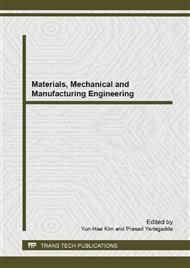p.712
p.719
p.725
p.729
p.733
p.737
p.742
p.746
p.750
Comparative and Study the Influence of Sand Depth for Liquefied Evaluation
Abstract:
CPT is a kind of relatively superior field test technology, which is one of important the liquefaction in-situ test at home and abroad. In 1987, China has formed the national standard CPT liquefaction evaluation method, which predominantly from 1976 Tangshan earthquake liquefaction data, and then has not been tested. Recently by the 40 CPT liquefaction field data of Bachu earthquake obtained a liquefied evaluation formula. Due to comparing the liquefied evaluation methods at home and abroad, found the national standard CPT liquefied critical curve is qualitatively distinct to the others liquefied evaluation methods. If it is wrong about the code of CPT liquefied evaluation method, which the liquefied critical curve will be smaller along with the direction of the depth, will direct the liquefied evaluation critically be conservative and the depth liquefaction evaluation clearly be hazardous. In theory, this problem can be attributed to the influence of sand depth for liquefied evaluation, worthy of further discussion.
Info:
Periodical:
Pages:
733-736
Citation:
Online since:
November 2013
Authors:
Keywords:
Price:
Сopyright:
© 2014 Trans Tech Publications Ltd. All Rights Reserved
Share:
Citation:


